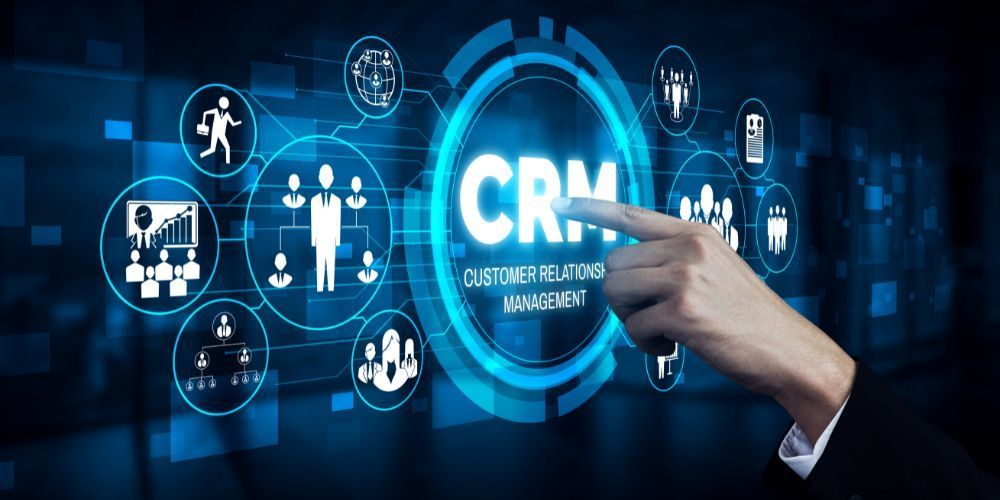Key Digital Challenges for OEMs in North America: Navigating the Future of Automotive Retail
The automotive industry is undergoing a seismic shift, with digital transformation reshaping how original equipment manufacturers (OEMs) engage with consumers. In North America, OEMs like Volvo, Ford, General Motors, and Toyota face unique digital challenges as they navigate changing consumer expectations, the rise of direct-to-consumer (DTC) models, and the evolution of digital commerce. This article explores these key challenges and strategies to overcome them.

1. Bridging the Gap Between Traditional Dealerships and Digital Retail
The car buying experience has evolved dramatically in recent years, with consumers increasingly expecting a seamless transition between online research and offline purchasing. While some customers still value the hands-on experience of visiting a dealership, many prefer the convenience of exploring vehicles, securing financing, and even purchasing cars entirely online. OEMs must find ways to integrate these digital and physical experiences while maintaining consistency and customer satisfaction.
Challenges
Legacy dealership networks often resist digital-first models due to concerns over losing control of customer relationships. Integrating real-time inventory, pricing, and financing data across various digital and physical touchpoints presents another layer of complexity. Additionally, ensuring a cohesive brand experience across channels remains a challenge, as dealerships often operate independently with varying levels of digital readiness. As a result, many automakers struggle to create a unified experience that meets the demands of today’s tech-savvy consumers.
Strategies for Success
To bridge this gap, OEMs should focus on omnichannel strategies that connect digital and in-person interactions. AI-driven personalization can enhance online experiences by offering tailored vehicle recommendations. Instead of sidelining dealerships, manufacturers should empower them with digital tools, training programs, and data-driven selling techniques to improve their online capabilities. Providing transparent pricing and a streamlined financing process will further strengthen the connection between digital and in-person experiences.
2. The Direct-to-Consumer (DTC) Dilemma
The direct-to-consumer model, popularized by brands like Tesla, presents both an opportunity and a challenge for traditional OEMs. While bypassing dealerships can allow automakers to have greater control over pricing, branding, and customer experience, the transition is not straightforward. Established OEMs must navigate legal complexities, dealership agreements, and logistical hurdles to implement a viable DTC strategy.
Challenges
State-by-state legal barriers pose significant obstacles, as many states have regulations that restrict or prohibit direct sales by manufacturers. Additionally, dealership networks, which have long been the backbone of automotive sales, often resist DTC initiatives due to concerns about disruption and lost revenue. Building a robust logistics and fulfillment network to support direct deliveries and ensuring a strong after-sales service network further complicate the shift toward DTC models.
Strategies for Success
OEMs can explore hybrid sales models that combine DTC elements with dealership support. By developing digital storefronts with self-service options, automakers can provide customers with a streamlined shopping experience. Data-driven insights can help manufacturers optimize pricing, inventory, and delivery logistics. Establishing a strong service and maintenance infrastructure tailored to DTC customers will also be crucial in ensuring long-term success. Additionally, seamless transitions between online browsing and in-person consultations can help ease customer concerns.

3. Evolving Digital Commerce for an Experience-Driven Industry
The expectations for digital commerce in the automotive industry continue to grow, with consumers looking for an experience that mirrors the ease of online retail. From researching and reserving vehicles to securing financing and completing purchases, customers want intuitive, frictionless digital experiences that simplify their journey.
Challenges
Security and compliance concerns remain at the forefront of digital transactions, with automakers needing to ensure that sensitive consumer data is protected. Financing, trade-ins, and leasing add additional layers of complexity that many current digital platforms struggle to accommodate. Many consumers are still hesitant to make high-ticket purchases online, requiring automakers to build trust through transparency and digital support. Streamlining digital paperwork and aligning payment processes with consumer expectations are also key hurdles to overcome.
Strategies for Success
To improve digital commerce, OEMs should integrate seamless financing and leasing options into their online platforms. Virtual test drives and AR/VR showroom experiences can help bridge the gap between physical and digital retail. Implementing customer-centric policies such as easy returns and transparent pricing will help build trust in digital transactions. AI-driven chatbots and digital assistants can guide customers through the purchasing process, ensuring a smooth and informed buying journey. By offering an all-in-one digital solution, OEMs can cater to modern consumers who expect convenience and efficiency.
4. Leveraging Data to Drive Customer-Centric Digital Transformation
Data has become one of the most valuable assets in the automotive industry, allowing OEMs to refine marketing strategies, optimize supply chains, and enhance customer experiences. However, many automakers still struggle with siloed data, regulatory compliance, and privacy concerns that hinder their ability to fully capitalize on digital transformation.
Challenges
Data fragmentation is a major issue, with information spread across dealerships, OEM systems, and third-party platforms. Privacy concerns and evolving data protection regulations add another layer of complexity, requiring automakers to be transparent in their data practices. Many manufacturers lack real-time data integration across sales, service, and digital platforms, limiting their ability to deliver personalized experiences. Additionally, outdated technology stacks often create bottlenecks, preventing seamless data utilization.
Strategies for Success
To unlock the full potential of data, OEMs should invest in customer data platforms (CDPs) that unify insights across various touchpoints. AI and predictive analytics can help personalize customer interactions, while transparent data policies will build consumer trust. Machine learning can be leveraged to identify trends, optimize pricing, and enhance customer service. Additionally, emerging technologies like blockchain can be used to improve data security and integrity, ensuring compliance with regulations while enhancing operational efficiency.
For OEMs like Volvo, Ford, and Toyota, digital transformation is not just about technology—it’s about reshaping the customer experience. The brands that succeed in the coming years will be those that seamlessly integrate digital tools with traditional retail models, navigate the complexities of DTC sales, and create frictionless commerce experiences. By leveraging data, investing in omnichannel strategies, and prioritizing customer engagement, automakers can position themselves as leaders in North America’s evolving automotive landscape.
Three Key Takeaways for OEMs Today
- Prioritize Digital-First Retail Strategies – Invest in omnichannel experiences that unify digital research, purchasing, and in-person interactions at dealerships.
- Develop a Flexible Sales Model – Adopt a hybrid approach that blends traditional dealership sales with direct-to-consumer capabilities to meet changing consumer expectations.
- Enhance Data Utilization – Leverage AI and analytics to provide personalized experiences, streamline operations, and optimize pricing strategies.










